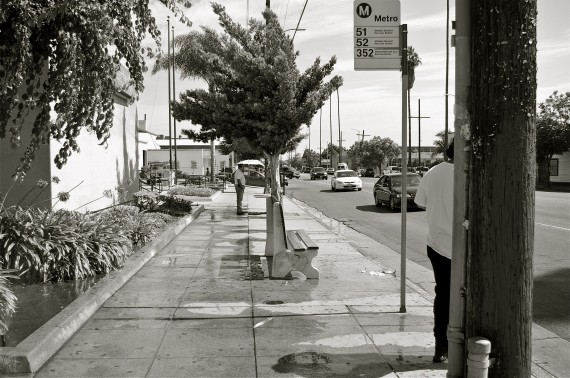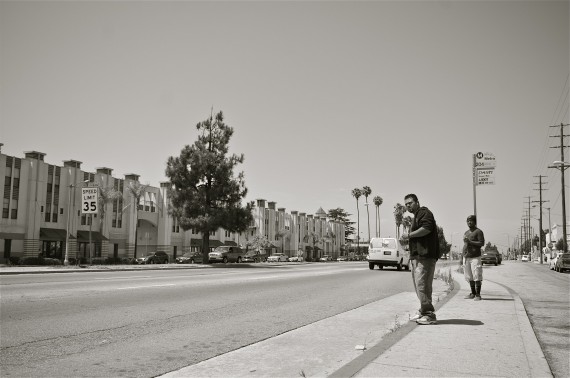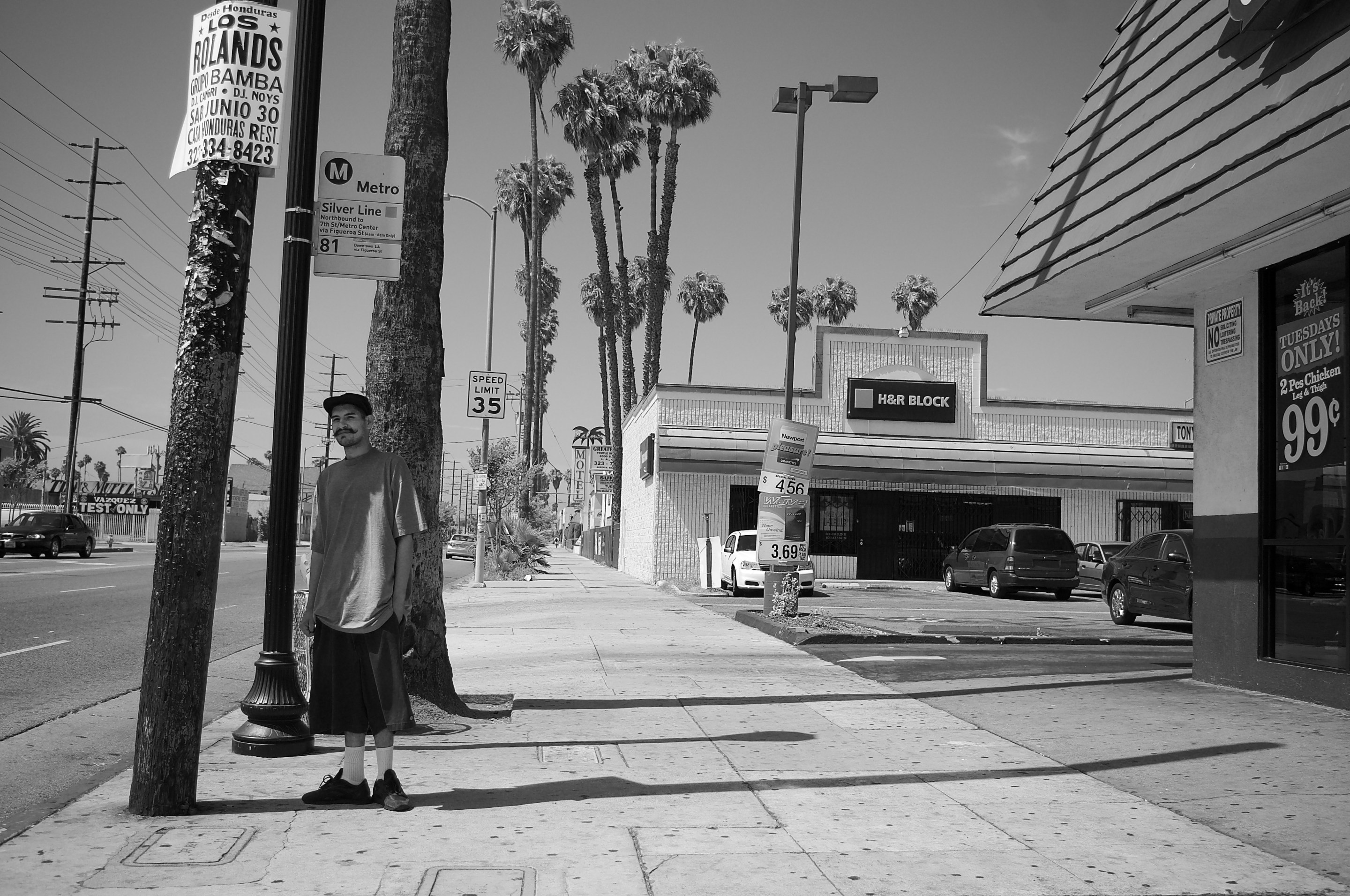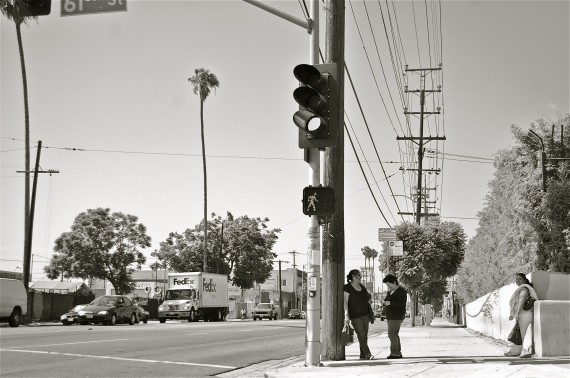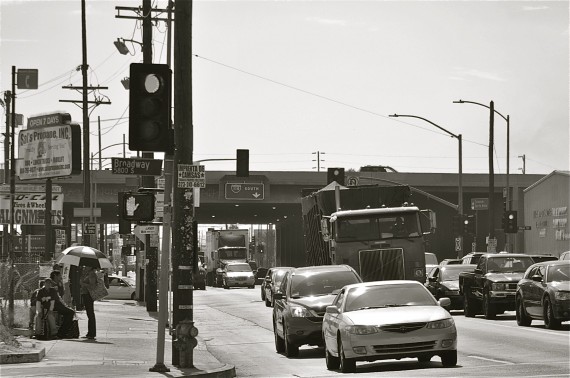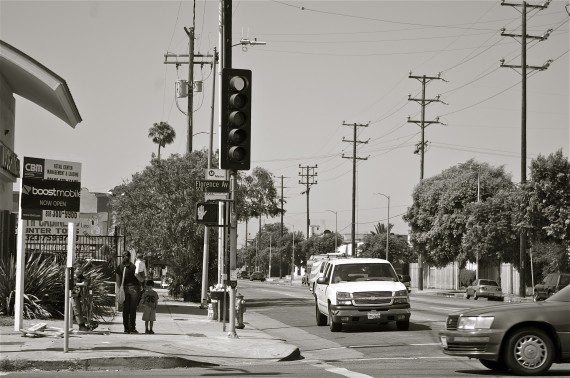It's been hot lately.
Maybe not as hot as out East and, thankfully, not as humid. But temperatures in the 80s are nothing to sneeze at. Especially if you have to stand around on a street corner with no shelter while waiting anywhere between ten minutes and half an hour for a bus. Now imagine that you are elderly, or that you have a couple bags full of groceries and a small child or two, and the heat can become oppressive.
A number of new benches have been put in place but, because there is no accompanying shelter, people tend not to use them during the heat of the day. In the few cases I have seen people using them mid-day, it has been to (unsuccessfully) hide behind them.
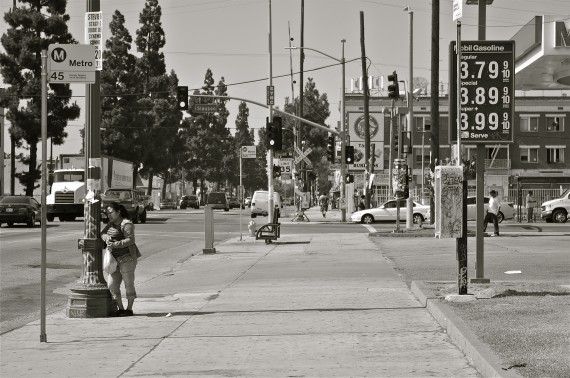
While the above-ground light rail stations have been explicitly designed to (appear to) shelter patrons in unique and community-pride enhancing ways, the more frequently used approximately 9,000 bus stops around the city have suffered from significant neglect.
The reasons for this are somewhat complex.
The City has a 20-year contract with outdoor advertising company CBS/Decaux to provide Angelenos with "street furniture." The Coordinated Street Furniture program grants CBS/Decaux the exclusive right to install and maintain kiosks, bus benches and shelters, trash cans, and outdoor restrooms in exchange for the right to sell and display advertising in the shelter and kiosk windows. The arrangement, initiated at the end of 2001, is intended to provide the city with a share of the revenues generated by the advertising.
Because CBS/Decaux's profits are tied to advertising, they have a greater interest in placing shelters nearer more affluent commercial districts. On their website, they market themselves to potential customers as being strategically placed in "top locations," namely "Main Upscale Neighborhoods," "Key Entertainment Venues," "Major Sports Venues," and the "Largest Universities."
Needless to say, South L.A. does not appear on that list.
Understanding that revenue potential would likely drive shelter placement, the contract the City negotiated at the time limits CBS/Decaux's ability to determine shelter locations. Of the 2500 shelters they were contracted to install, renovate, or replace, CBS/Decaux would only be able to determine the allocation of 35%. The remaining shelter locations would be determined by the local City Council office (25%) and by the Bureau of Street Services (40%).
Sounds promising, right?
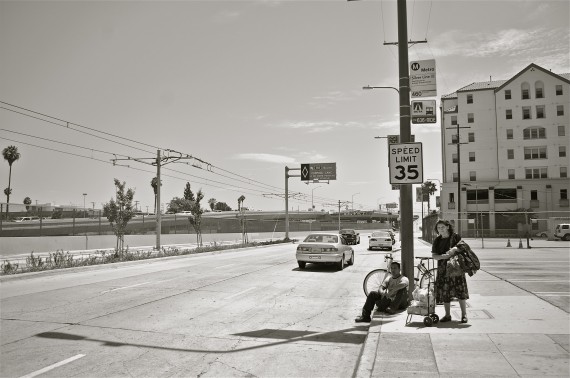
Eh, not so much.
In January of this year, City Controller Wendy Greuel's highly critical audit of the contract found that the City's cumbersome permitting process (averaging 129 days to process a single permit) meant that the City had only approved permits for about 69% of the advertising panels. Because of this, between 2002 and 2011, Los Angeles could have taken in $53 million in revenues, instead of the $29.9 million it received.
The delays in the permitting process have also made CBS/Decaux more reluctant to push forward on installing the remaining furniture. So, even though 1223 of the 1285 new shelters they were contracted to install have been permitted, as of March 2011, they had only installed 614. (For the full audit, click here.)
In the heat of the day, the average rider interviewed on the street cared very little about the bureaucratic shenanigans of the City.
"You think they don't already know this is a problem?" a man standing in the shade of a pole with his young daughter asked when I approached with my camera. "They don't have to ride the bus so they just don't care."
Others concurred, saying they hoped that my photos of them would help people see how neglected the stops they have to use every day are. Although most were thankful that they usually didn't have to wait too long for a bus, they felt that the general uncleanliness and lack of shelter at the stops probably served to deter riders of choice from trying out the bus.
Summer is just getting started, said one. "It's going to be hot out here."
